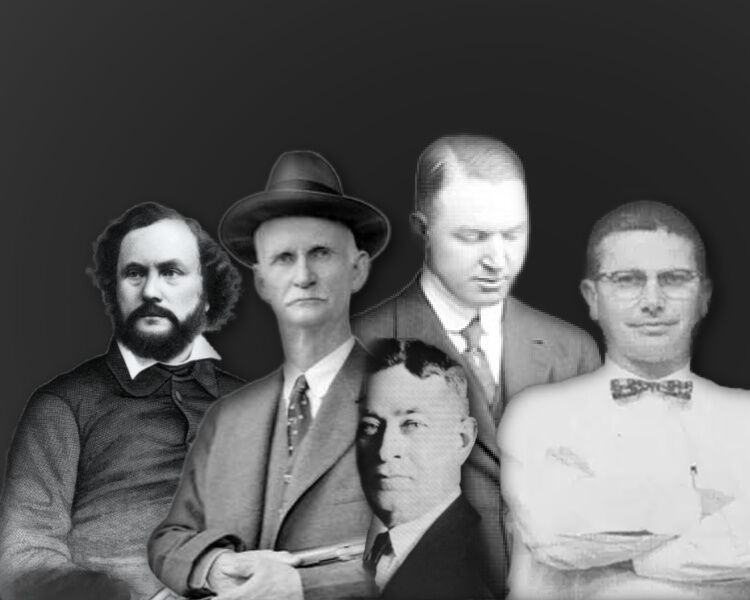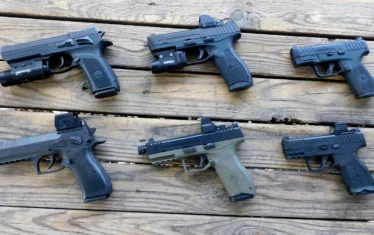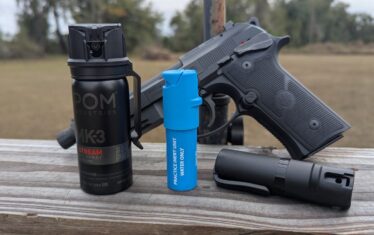The United States has often led the way in firearms design. I don’t want to overlook geniuses like Georg Luger and Dieudonné Saive, but the United States has long led the world in firearm innovation. While many designers have made considerable contributions to the world of firearms, a select few have made truly remarkable impacts. These men are what I’d call the Fathers of Modern American Firearms.
Samuel Colt
“God made men, and Samuel Colt made them equal.” That famous slogan tips the hat to Colt’s massive contributions to the world of modern American firearms.
Samuel Colt didn’t invent revolvers, but he propelled the idea to the next level. He designed the Colt Paterson, the first commercial repeating firearm with a revolving cylinder with a single fixed barrel.
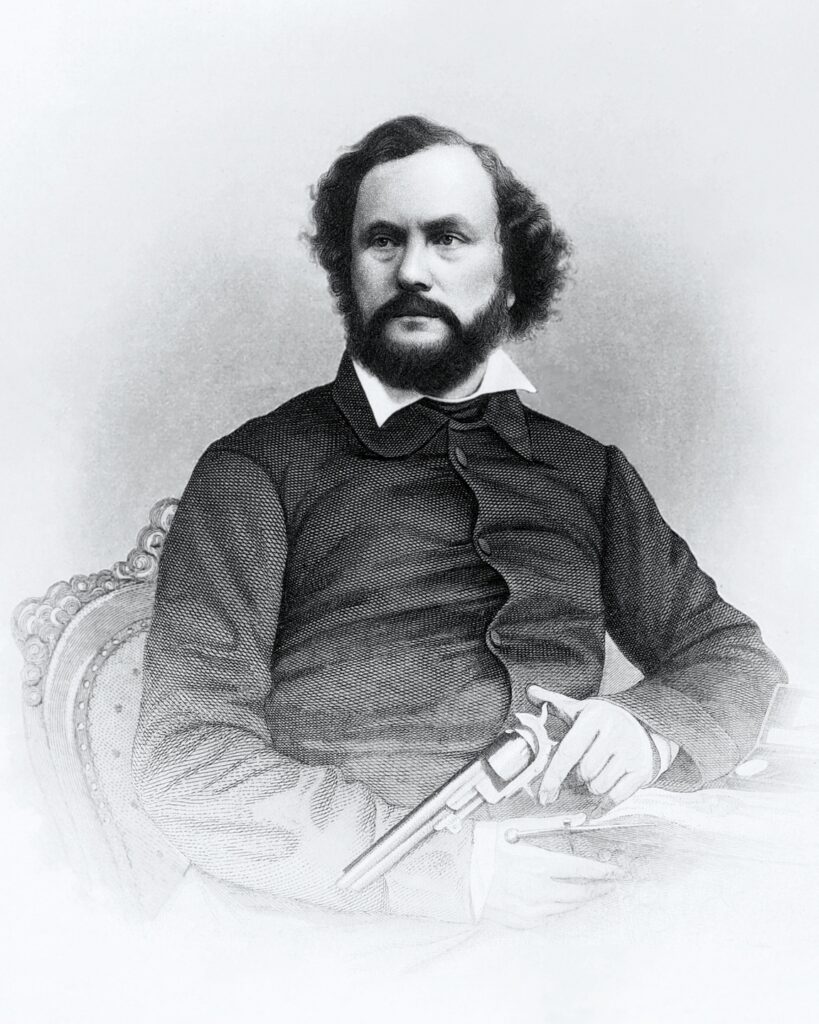
Despite the initial slow sales of the Colt Paterson, Samuel Colt’s company persevered through the threat of bankruptcy. A turning point came during the Seminole War when a sale of Colt revolving pistols and rifles boosted the platform’s popularity. This success story began a legacy, as the Colt Paterson became the foundation for a series of improved and superior revolvers.
Samuel Colt is the most dominant of the fathers of revolver design. The Colt revolver became the basis for revolvers throughout the 19th century and well into the 20th century. Almost 400,000 revolvers were produced during Colt’s lifetime, and his guns were used by armed forces worldwide. He created functional repeating firearms at a time when single-shot platforms were the norm. Colt revolvers, both big and small, changed the world.
John Browning
John Moses Browning grew up around guns. His father was a gunsmith, and he and his brothers were raised in the craft. At 23, he sold his first design to Winchester for $8,000. That started Browning’s career, and he became the most dominant arms designer of his time. Browning passed away while working on the Hi-Power, which became one of the most dominant handguns ever created.
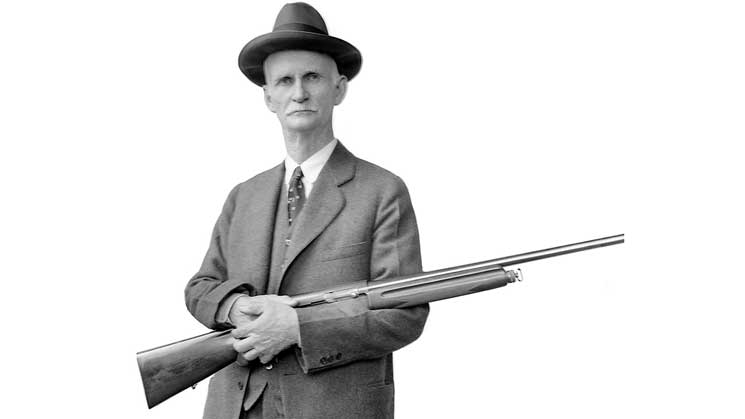
John Browning’s designs included a wide range of firearms, including lever-action rifles, shotguns, handguns, machine and guns. Nearly everything he produced was successful and some of his designs are absolute legends. These include the M1911, the M1897, the M2, the Winchester 1894, and the Browning A5. Several of his designs are still used to this day.
Browning also developed operating systems that influenced modern gun design, notably the short recoil system used in nearly every modern semi-automatic handgun.
He continued working in firearm design to the very end of his life, with his guns finding their way into the hands of hunters, sport shooters, police officers, and soldiers worldwide. The man has staying power, and he’s yet to be uncrowned as the king of American firearms design. Of all the fathers of Modern American firearms, he stands as the most important.
John Pedersen
John Browning once proclaimed that the world’s best gun designer was John Pedersen. That’s quite the compliment from a man largely considered to be the best gun designer in the world, himself.
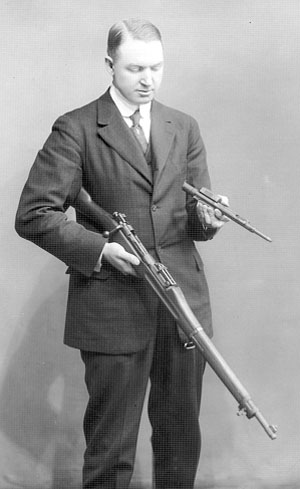
John Pedersen worked for both Remington and the United States Government, producing sporting firearms, military firearms, defensive handguns, and more.
His most well-known designs for Remington are the Model 17 and Model 51. Browning and Pedersen collaborated on at least one project, the Remington Model 17, which was used by the United States military and later influenced designs like the Ithaca 37. The Model 51 introduced an ingenious hesitation-delayed blowback system into a very compact pistol, reportedly favored by General Patton.
John Pedersen had several successful designs and others that, although not commercially successful, were ahead of their time. His Pedersen device turns bolt-action rifles into submachine guns, and the .276 Pedersen cartridge was well ahead of its time. Pedersen’s biggest curse was timing, but a variety of his designs have had a lasting influence on modern firearms.
T.C. Johnson
T.C. Johnson was another contemporary of John Browning and John Pedersen. He started his career as an industrial engineer before finding his true calling at Winchester Repeating Arms. At Winchester, he became a significant force in firearm design. T.C. Johnson helped create semi-automatic rifles as we now know them.
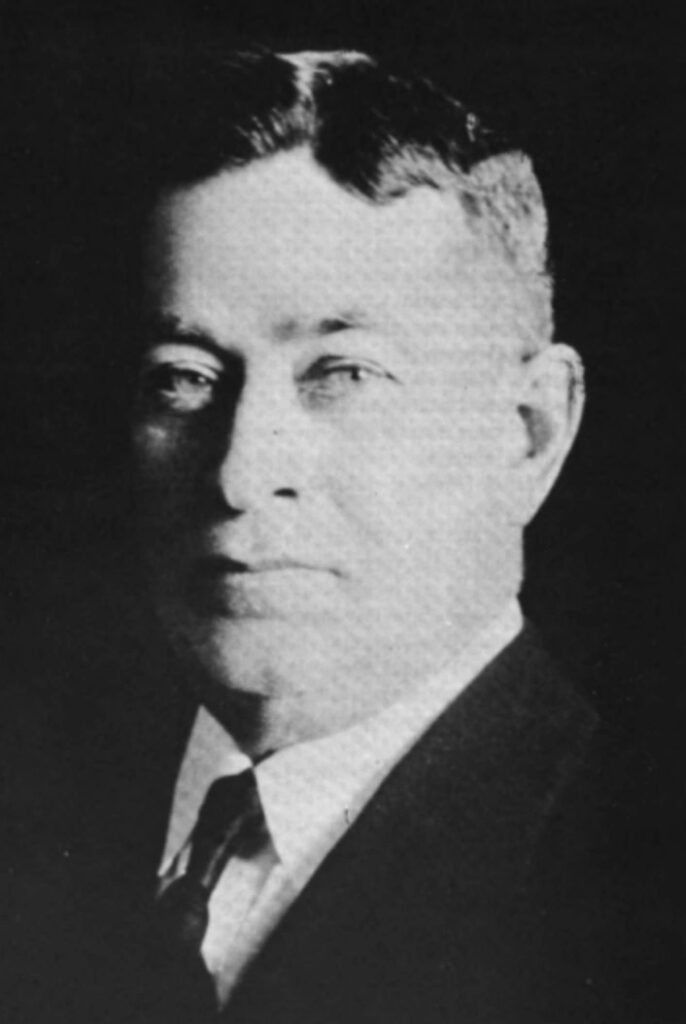
He created the first commercially available semi-auto rimfire and centerfire rifles, the Winchester Model M1903 and M1905. These designs were way ahead of their time and still influence modern gun design. He also created the Model 12 shotgun, which is often declared to be the perfect repeater. He also designed the Model 54 rifle, which would become the Model 70, also known as the Rifleman’s Rifle.
Johnson spent his entire career at Winchester and was named on 124 patents held by the company. Although his contributions to the firearm world often go unnoticed, guns like the Ruger 10/22, the Remington 870, and even the AR-15 are influenced by his design. Of all the fathers of American firearms, he might not be the most well-known, but his firearms are iconic.
Eugene Stoner
Eugene Stoner had an interesting route to the world of firearms. He was a machinist who couldn’t afford to go to college. At the outset of World War 2, he enlisted in the Marine Corps and served in the South Pacific, gaining hands-on experience with firearms as an armorer — an experience that undoubtedly influenced his designs.
After the war, he returned to machine work and eventually found his way to a small shop called Armalite. There, he designed various guns, including the famed AR-10, which later became the AR-15.

The AR-15 served the United States military as the M16 for decades and remains the service rifle to this day. Generations of soldiers — sons, fathers, and grandfathers — have carried the gun through numerous wars. The AR-15’s influence on modern rifle design is profound, with its use of polymer and aluminum revolutionizing firearm production.
Stoner continued to innovate, collaborating with Knight’s Armament to produce AR-15 and AR-10 variants that continued his design.
Eugene Stoner also developed a range of other platforms, though none achieved the same success as the AR-15. However, these designs were still highly influential. Guns like the AR-16 would be scaled down to the AR-18, making him the father of modern rifle designs and their short-stroke gas piston systems. Most new 5.56 rifles use short-stroke gas piston systems taken straight from his designs.
Eugene Stoner’s guns are ultimately some of the most influential modern firearms ever.
The Fathers of Modern Gun Design
These five men created firearms that remain influential to this day. Their designs shaped firearms technology and helped form the world of guns as we know it. Each contributed in their own way, earning their place among the hall of fame gun designers.





